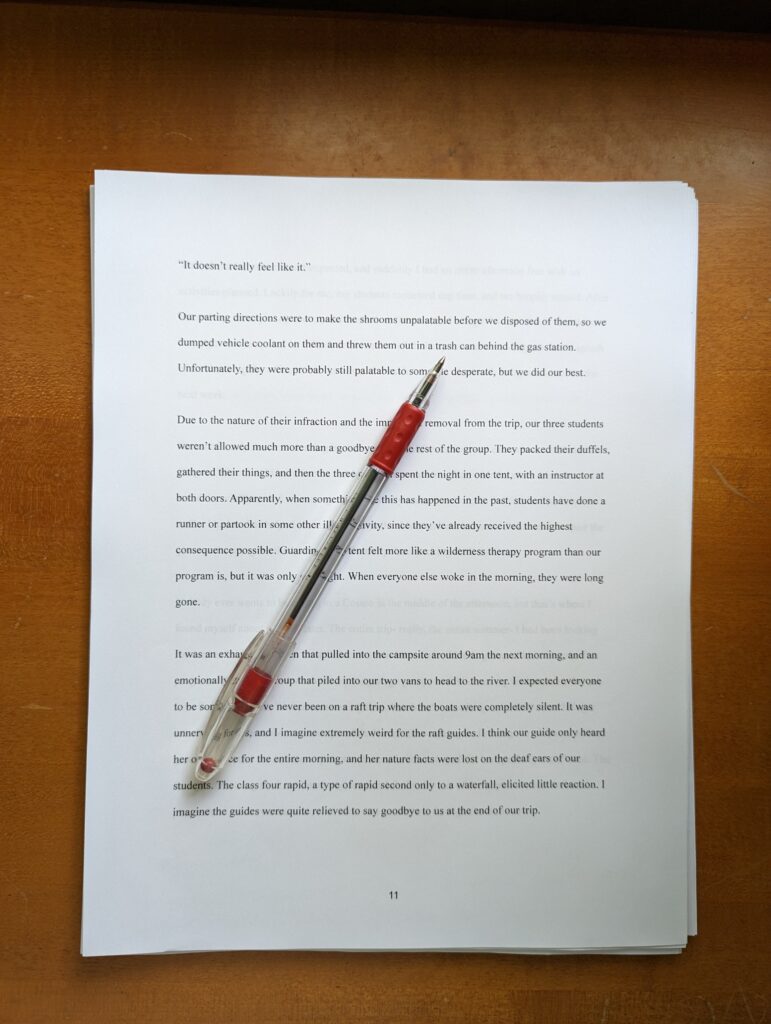Editors read differently from people who are not editors. A part of our brain holds an imaginary red pen and corrects punctuation as we read, chooses stronger verbs, strikes out adverbs, and always, always, fixes typos and misspellings. The red pen doesn’t get too much use in published books, but I am not surprised when I do find random errors. Even considering how many times a manuscript and then a typeset book is read and proofread, humans make mistakes. (I will not venture into a discussion of presumed perfection when computers proofread, mainly because I don’t know enough about it.) What makes me sigh and my red pen scribble in a flurry of dismay and annoyance are typos in the everyday world.
Advertising flyers in the mail can have typos. Websites. (So many websites). A label on a bottle of wine. And media. Several years ago, when I learned that the New York Times had reduced its copyediting staff, I started seeing typos in both news articles and op-ed columns. It got to be a game—can I find at least one error every day? The game quickly got boring because, yes, I found at least one error every day, and frequently two or three. The latest one: wont instead of won’t. All dedicated editors and proofreaders know that homographs—words that are spelled alike but have different meanings—are the work of the devil. But since some of the Times’ material is written quickly and uploaded without much time to proof, I just roll my eyes at these minor errors and move along.
Beyond typos, though, there are continuity errors in longer works of fiction that urge me to dash off a letter to the publishing house. Several years ago I read a book that used two protagonists’ points of view. On a few occasions, the wrong protagonist’s name was used—Protagonist A when we were in Protagonist B’s point of view. How did that get past the writer, the editor, the copy editor, and the proofreader? More recently, I read a book in which a character is drinking out of a teacup with saucer on one page and from a mug on the next. (That particular author also tended to use the word very as a modifier. More strike-throughs with my red pen.)
In summation: proofread. And proofread again. And when someone finds an error in your published work that went through several rounds of proofreading, sigh and nod and make the correction. Just as I had to do a few weeks ago when a client pointed out an error on this website.

Leave a Reply